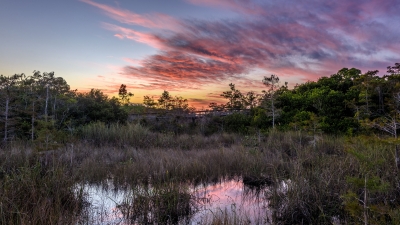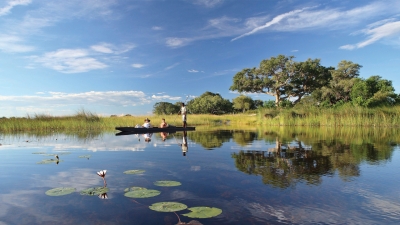What is the Everglades National Park famous for?

The everglades national park in the U.S. is home to one of the largest wetlands in the world. But there’s an invasive species there has been singularly decimating native mammal species for decades.
It's the largest!
The largest subtropical wilderness in the U.S., Everglades National Park is located on the southern part of Florida. Covering an area of more than 6,000 sq.km. the region is a veritable mosaic of ecosystems from freshwater sloughs, prairies, and pineland to cypress, mangrove, coastal lowlands, marine, and estuarine. More than 40 species of mammals, nearly 50 species of reptiles, over 300 species of birds and an equal number of fish species, in addition to several types of insects such as butterflies, arachnids, millipedes, and centipedes, call the Park home. The region is a refuge for several rare, endangered, and threatened species. Within the limits of the Park are breeding grounds for several waders. It is also a significant corridor for migratory birds. The Park was listed as a UNESCO World Heritage Site in 1979. However, it was moved to the List of World Heritage in Danger in 1993 and remained so till 2007. In 2010, the region was included in the list again and has continued to remain there. This is because the Park, "due to its low lying elevation, is vulnerable to rising sea levels driven by a warming climate".
Wildlife
The birds found in the Park include ducks, teals, pintails, wigeons, shovelers, gadwalls, geese, storks, ibises, herons, egrets, bitterns, spoonbills, eiders, hummingbirds, swifts, nighthawks, sandpipers, plovers, gulls, snipers, stilts, terms, godwits, curlews, doves, kingfishers, cuckoos, hawks, kites, falcons, kestrels, loons, coots, rails, moorhens, mynahs, sparrows, finches, thrushes, wrens, crows, warblers, Flycatchers, crows, grosbeaks, swallows, orioles, buntings, nuthatches, starlings, pelicans, cormorants, woodpeckers, grebes, shearwaters, parakeets, and owls. Among the amphibians living here are frogs, toads, newts, and sirens. The land and marine mammals one can sight here are manatees, panthers, deer, bobcats, raccoons, opossums, foxes, otters, and rabbits. The reptile world in the Park is dominated by alligators, crocodiles, snakes, boas, pythons, iguanas, skinks, geckos, lizards, turtles, and terrapins.
Irula expertise to rescue Florida!
Burmese pythons are among the largest snakes in the world, and can grow up to even 20 feet in length. Native to Southeast Asia, these pythons are an invasive species in Everglades. They are said to have reached the place in the 1980s when exotic pet trade thrived and many of the snakes arrived in the region as pets. When it turned out they'd grow to be over 20 feet, many of the pet owners just released them into the wild. It is said that when Hurricane Andrew unleashed its fury in the region in 1992, many captive pythons spread into the region and have thrived in the swamps since. Nobody knows the exact number of pythons out there. And that's been bad news! These snakes have been decimating native mammal species for decades. As part of the initiatives to tackle the menace, a python removal programme was introduced. A few years ago, the efforts included a team from India. To be precise, the Irula tribe snake hunters from Tamil Nadu. Why the Irulas? Because they are considered among the best snake hunters in the world. But they would be crossing continents and working in a different terrain. Would it work? Work, it did! In just 14 days, they managed to catch as many Burmese pythons.
Picture Credit : Google

